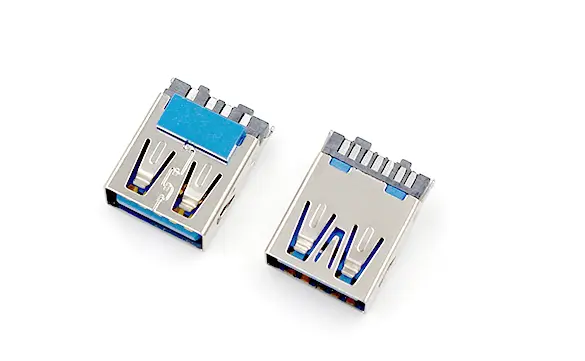How to Design Good Stamping Dies?
Sure, please find the generated article below.
How to Design Good Stamping Dies?

Are you an engineer or designer looking to create high-quality stamping dies? Stamping dies are essential tools for producing metal components in various industries, including automotive, aerospace, and electronics. Designing good stamping dies requires careful consideration of factors such as material selection, die geometry, and process parameters. In this article, we will explore the key principles and best practices for designing effective stamping dies that deliver high-quality parts with precision and efficiency.
Understanding Stamping Die Design
Stamping dies are specialized tools used to shape and cut sheet metal into the desired form. They typically consist of two main components: the punch and the die. The punch is the upper part of the die, while the die serves as the lower part. When the punch and die come together, they create the desired shape and features in the sheet metal. Designing a good stamping die involves carefully optimizing the geometry, material selection, and manufacturing process to ensure precise and efficient operation.
One of the key considerations in stamping die design is the material to be used. The material must be strong enough to withstand the forces and pressures involved in the stamping process while also being able to maintain dimensional accuracy and surface finish. Common materials for stamping dies include tool steel, carbide, and powdered metals. Each material has its own advantages and limitations, so it's important to carefully evaluate the specific requirements of the stamping application when selecting the die material.
Another important aspect of stamping die design is the geometry of the die. The die geometry must be carefully designed to create the desired part features while also considering factors such as material flow, springback, and tool life. The design of the punch and die must be optimized to minimize deflection and wear while also ensuring that the metal can flow smoothly and accurately into the desired shape. This often involves complex computer-aided design (CAD) and finite element analysis (FEA) to simulate the stamping process and optimize the die geometry for the best possible performance.
Key Principles of Stamping Die Design
When designing stamping dies, there are several key principles that engineers and designers should keep in mind to ensure the best possible outcome. One of the most important principles is the concept of uniform material flow. In stamping operations, it's crucial to ensure that the material flows uniformly and smoothly into the desired shape without any tearing, wrinkling, or other defects. This requires careful design of the punch and die geometry, as well as optimization of process parameters such as blank holder force and lubrication.
Another key principle of stamping die design is the concept of controlled springback. Springback is the tendency of sheet metal to return to its original shape after being formed in a die. This can lead to dimensional inaccuracies in the final part, so it's important to carefully design the die geometry and process parameters to minimize springback and achieve the desired part dimensions. This often involves the use of special forming techniques, such as pre-bending or coining, to control the material's behavior and achieve the desired shape.
In addition to uniform material flow and controlled springback, another key principle of stamping die design is the concept of efficient material usage. Stamping operations can produce a significant amount of scrap material, so it's important to design the die to minimize waste and maximize material utilization. This can involve techniques such as nesting parts closely together, using multi-station dies, or integrating scrap removal features into the die design. By carefully optimizing the die design for efficient material usage, engineers can reduce costs and improve the overall sustainability of the stamping process.
Best Practices for Stamping Die Design
In addition to understanding the key principles of stamping die design, there are several best practices that can help engineers and designers achieve the best possible results. One of the best practices for stamping die design is the use of simulation tools to optimize the die geometry and process parameters. Software tools such as CAD and FEA allow engineers to simulate the stamping process and predict the behavior of the material, helping to optimize the die design for the best possible performance.
Another best practice for stamping die design is the use of advanced materials and coatings. In recent years, there have been significant advancements in die materials and coatings that can improve the performance and longevity of stamping dies. For example, new tool steels and carbide materials offer improved wear resistance and toughness, while advanced coatings such as diamond-like carbon (DLC) can reduce friction and extend tool life. By staying abreast of the latest developments in die materials and coatings, engineers can design stamping dies that offer superior performance and longevity.
In addition to simulation tools and advanced materials, another best practice for stamping die design is the use of robust process controls. Stamping operations are highly sensitive to process variables such as blank holder force, lubrication, and part nesting, so it's important to carefully control these variables to achieve the best possible results. This often involves the use of sensors, monitors, and closed-loop feedback systems to ensure that the stamping process is running within the desired parameters and producing high-quality parts.
Optimizing Stamping Die Design for Efficiency and Quality
In conclusion, designing good stamping dies requires careful consideration of factors such as material selection, die geometry, and process parameters. By understanding the key principles and best practices of stamping die design, engineers and designers can optimize the die design for efficient and high-quality operation. With the use of advanced simulation tools, materials, and process controls, it's possible to create stamping dies that deliver precision, efficiency, and longevity, helping to drive the success of stamping operations in a wide range of industries.
+86 13433648351





